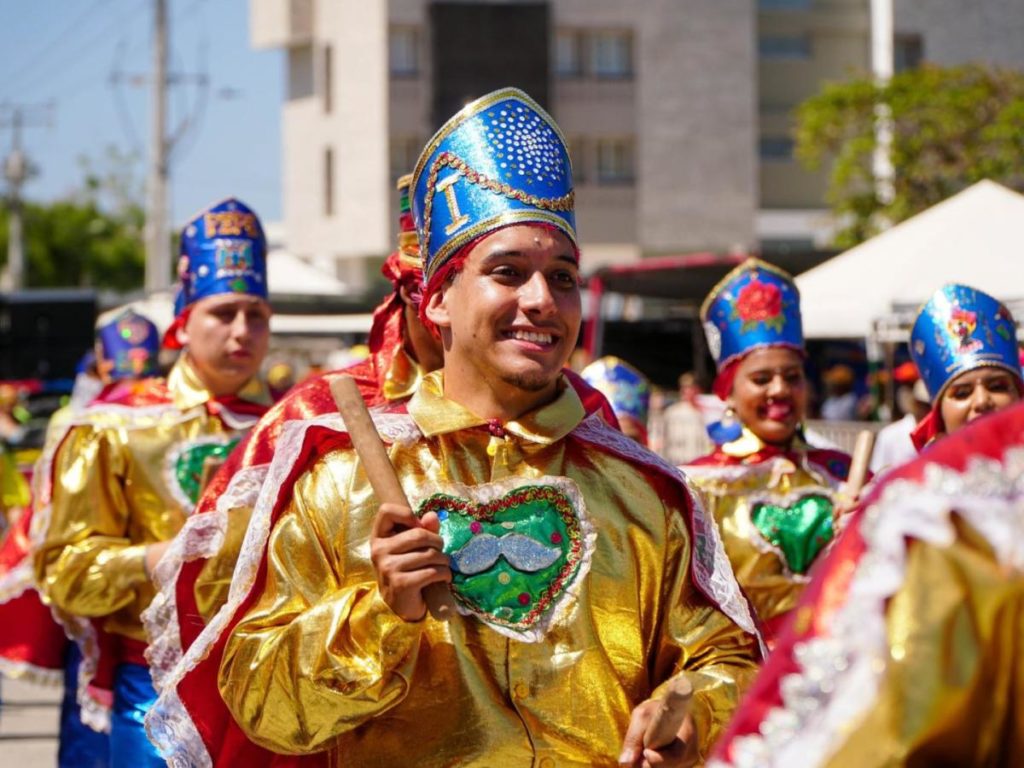
This year’s Carnival of Barranquilla has been in full swing this weekend: the fusion of tradition and joy of these magical days will continue until tomorrow, Tuesday, February 13, the day that marks the end of the festival and is the prelude to Ash Wednesday, which begins the Catholic Lent.
Since Saturday, Barranquilla has been experiencing the most awaited moment of the year: Carnival. Officially, it is four days of festivities and joy, although the events began on January 20, with the so-called “pre-Carnival”. Children’s parades, music, coronation of the queens of the festival: parades have dominated a few days in which the capital of the Colombian Caribbean dresses up in all its colors to celebrate its most emblematic festival.
Cumbia, queen of the party
Among the most outstanding dances of the Barranquilla Carnival is the cumbia, a folkloric expression that fuses indigenous, African and European elements. This dance, accompanied by drum and flute music, reflects the cultural and ethnic richness of Colombia’s Caribbean region. Likewise, the Mapalé, of African origin, is another emblematic dance that stands out for its frenetic rhythm and vigorous movements.
The Barranquilla Carnival is also distinguished by a series of traditional events that attract thousands of people each year. The Gran Parada Parade, with its colorful floats, comparsas and creative costumes, is the highlight of the celebration. Folkloric groups and musicians parade through the streets of Barranquilla, flooding the city with exuberant music and dance.
Another traditional event is the Battle of Flowers, a celebration that pays tribute to the floral diversity of the Caribbean region. Floats lavishly decorated with flowers parade through the streets of Barranquilla, while Carnival queens, chosen for their beauty and grace, wave to the crowd from their floral thrones.
In addition to traditional dances and events, the Barranquilla Carnival offers a wide range of cultural activities, such as concerts, art exhibitions and gastronomic displays. These activities not only enrich the Carnival experience, but also promote cultural exchange and pride in Caribbean identity.
The Battle of Flowers marks the beginning
Carnival Saturday marks the beginning of festivities with the Battle of Flowers, the first event of the four-day celebration of the Barranquilla Carnival. This parade, considered the most important and most anticipated, features a magnificent display of floats led by the Carnival Queen, followed by folkloric groups, costumes, cumbiambas and comparsas, and winners of previous contests.
The Battle of Flowers, originated in 1903 at the initiative of General Heriberto Arturo Vengoechea Munive, commemorates the end of the Thousand Days War and marked the return of the carnival to Barranquilla, after its suspension in 1900. Initially, this parade was a walk along the old camellón Abello, where prominent families faced each other in a festive game of streamers, confetti and flowers. Today, the Battle of Flowers takes place on Via 40, with decorated floats and sound equipment inviting the public to join in the celebration.
Simultaneously, parades are held along Carrera 44, the “Sonia Osorio” Flower Battle of Remembrance, which is part of the 44th Street Carnival, a free event without boxes, and the King Momo Parade on 17th Street.
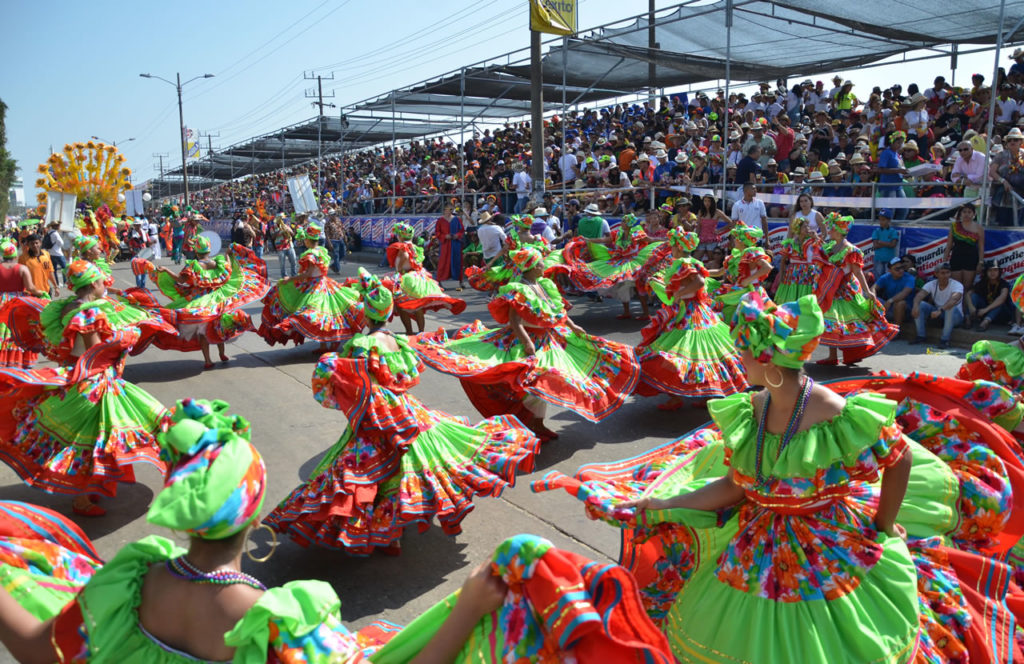
Great Parade of Tradition, Sunday’s highlight
For the second day, Sunday, the Great Parade of Tradition and Folklore has been highlighting, for more than 50 years, the essential traditions, with folkloric groups, cumbiambas and comparsas. On Via 40, without floats or large sound equipment, it exhibits popular dances such as the Caiman Cienaguero and the Negritas Puloy, along with traditional dances such as the Harlequin Devils and Son de Negro. The music reflects this diversity with cumbias, chandés and fandangos as the predominant rhythms.
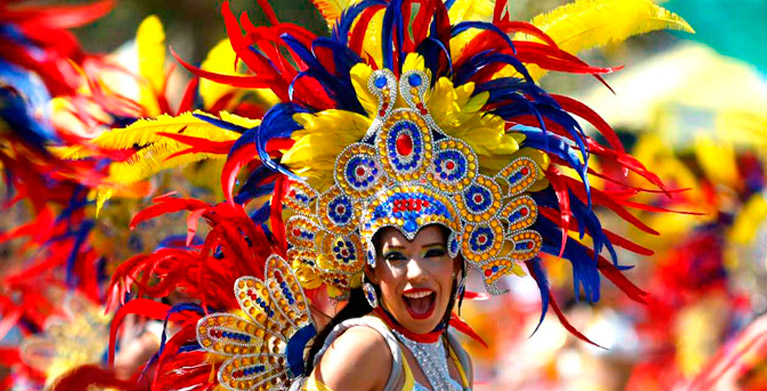
Grand Parade of Fantasy and Festival of Orchestras
On the third day, Carnival Monday, two events take place: the Grand Parade of Fantasy and the Festival of Orchestras. Since 2003, the Grand Parade has evolved with floats and a fusion of traditional elements and new trends. The comparsas de fantasía stand out, with their dazzling costumes and varied music, attracting young people and revitalizing Barranquilla’s carnival. In 2017, it was renamed Grand Parade of Comparsas to reflect its growing diversity.
For its part, the Festival of Orchestras, created in 1969, is an outstanding celebration that runs from the afternoon until the early morning of Carnival Tuesday. Various groups compete for the coveted Congo de Oro, performing tropical rhythms, vallenato, salsa, merengue and, more recently, urban music, including the popular champeta.
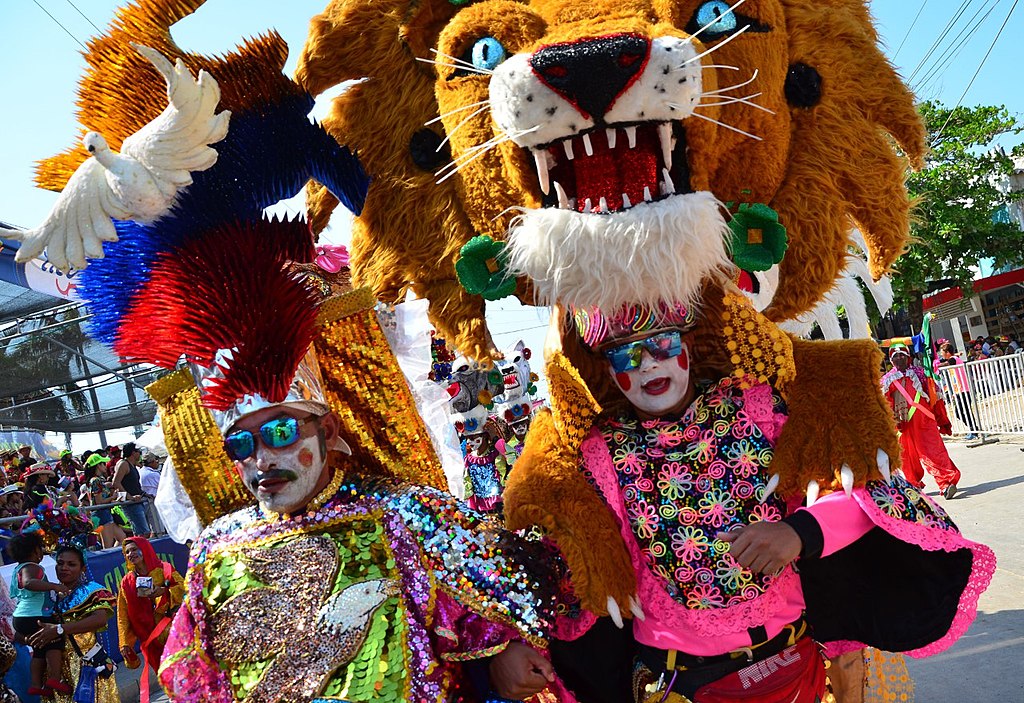
Burial of Joselito Carnival, the end of Carnival
The burial of Joselito Carnival marks the end of Carnival. It is an emblematic ritual characterized by festive and humorous processions in several neighborhoods. Joselito, a symbol of carnival joy, symbolically “dies” at the end of the festivities to be “reborn” in the next carnival.
This ritual, inspired by the burial of the sardine, has included since 1999 the contest “Joselito goes with the ashes”. In addition, a litany meeting is organized in the Abajo neighborhood or in the Plaza de la Paz, where both local and international issues are discussed.
Ash Wednesday, following the burial of Joselito, marks the beginning of Lent, a period of religious reflection that precedes Holy Week. This event represents a significant moment of transition in the cultural life of Barranquilla, marking the end of the festive celebration of Carnival and the beginning of a period of recollection and abstinence for believers.
Inclusive party
The carnival festival has been inclusive for decades now. Although it started years before, since 2022 the so-called Gay Carnival is celebrated as an official part of the festival, with the participation of more than 12,000 people.
Although since the 80’s there were groups formed by members of the LGTBI community, they took part in the festival unofficially. It was in 1997 that the municipal council debated the official inclusion of these groups in the program of festivities. The initiative, defended by Councilman Orlando Rodriguez, had the support of several gay nightlife entrepreneurs in the city.
Since then, the inclusion of this group has become a reality, normalizing its visibility in public events. In 2015 the Intermunicipal Gay Reign was held for the first time, and the following year the first version of the popular Queen of Queens Gay Reign was held, in which ten neighborhoods of Barranquilla participated.
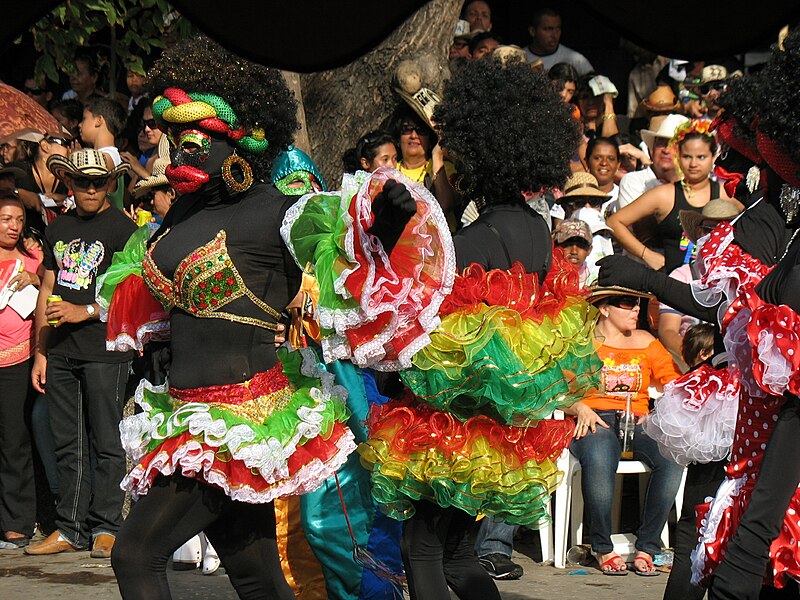
World Heritage event
The Carnival of Barranquilla, recognized as a Cultural and Intangible Heritage of Humanity by UNESCO, is one of the most important cultural events in Colombia. With a rich history dating back to colonial times, this festival represents the fusion of diverse indigenous, African and European traditions.
Originating in the celebration of pagan festivities before Lent, the Barranquilla Carnival has evolved over the centuries, incorporating elements of African culture brought by slaves and the European influence of the Spanish colonizers. Today, it stands out for its diversity of artistic manifestations, such as music, dance and colorful parades.
Participation in the Barranquilla Carnival is massive and diverse. From folkloric groups that preserve ancestral traditions to contemporary comparsas that mix urban rhythms, people of all ages and social strata come together to celebrate this festivity. Elaborate costumes, decorated floats and live music are key elements that give life to the streets of the city during the days of celebration.
In addition to its playful and festive character, the Barranquilla Carnival also has an important cultural and social significance. It functions as a meeting place where local identity, community cohesion and cultural pride are promoted. It also contributes significantly to tourism and the economy of the region, attracting national and international visitors eager to live this unique experience.
Commitment to sustainability
During the last two months, the Carnival organization has developed a roadmap for sustainability, which has included inter-institutional alliances, workshops for the elaboration of Carnival objects in recyclable materials, construction of sustainable practices and clean energy for suppliers. The objective is to provide valuable tools to contribute from the Carnival to make citizens more aware and responsible with the environment, encouraging the adoption of sustainable practices at individual and community level.
In this way, a festival with centuries-old origins adapts to the sensibilities and needs of our times, striking a perfect balance between modernity and tradition. In fact, in December last year, and shortly before the end of his term, the mayor of the city, Jaime Pumarejo, was recognized as a world leader for “promoting a sustainable Barranquilla”. The distinction, awarded by the Penn Institute for Urban Research, honors opinion leaders and innovators who have championed sustainable urban development and social inclusion in urban areas globally.
See all the latest news from Colombia and the world at ColombiaOne.com. Contact our newsroom to report an update or send your story, photos and videos. Follow Colombia One on Google News, Facebook, Instagram, and subscribe here to our newsletter.

